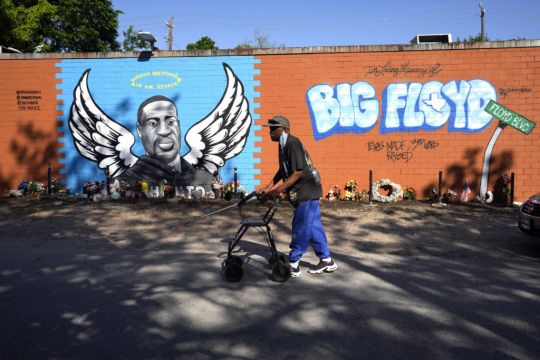A timeline of key events that began with George Floyd’s arrest on May 25, 2020, by four police officers in Minneapolis:
– May 25. Minneapolis police officers respond to a call soon after 8pm about a possible counterfeit 20-dollar note being used at a corner grocery and encounter a black man, later identified as George Floyd, who struggles and ends up handcuffed and face down on the ground. Officer Derek Chauvin uses his knee to pin Mr Floyd’s neck for about nine minutes while bystanders shout at him to stop. Bystander video shows Mr Floyd crying “I can’t breathe” multiple times before going limp. He is pronounced dead at a nearby hospital.
– May 26. Police issue a statement saying Mr Floyd died after a “medical incident” and that he physically resisted and appeared to be in medical distress. Minutes later, bystander video is posted online. Police release another statement saying the FBI will help investigate. Chauvin and three other officers — Thomas Lane, J Kueng and Tou Thao — are fired. Protests begin.
– May 27. Mayor Jacob Frey calls for criminal charges against Chauvin. Protests lead to unrest in Minneapolis, with some people looting and starting fires. Protests spread to other cities.
– May 28. Governor Tim Walz activates the Minnesota National Guard. Police abandon the 3rd Precinct station as protesters overtake it and set it on fire.
– May 29. Chauvin is arrested and charged with third-degree murder and manslaughter. President Donald Trump tweets about “thugs” in Minneapolis protests and warns: “When the looting starts, the shooting starts.” Protests turn violent again in Minneapolis and elsewhere.
– June 1. As protests continue nationwide and abroad, the county medical examiner finds Mr Floyd’s heart stopped as police restrained him and compressed his neck, noting he had underlying health issues and listing fentanyl and methamphetamine use as “other significant conditions”.

– June 3. Attorney General Keith Ellison files a tougher second-degree murder charge against Chauvin and charges the other three officers who were involved in Mr Floyd’s arrest.
– June 4. A funeral service for Mr Floyd is held in Minneapolis.
– June 6. Massive, peaceful protests happen nationwide to demand police reform.
– June 8. Thousands pay their respects to Mr Floyd in Houston, where he grew up. He is buried the next day.

– June 10. Mr Floyd’s brother testifies before the House Judiciary Committee for police accountability.
– June 16. Mr Trump signs an executive order to encourage better police practices and establish a database to track officers with excessive use-of-force complaints.
– July 21. The Minnesota Legislature passes a broad slate of police accountability measures that includes bans on neck restraints, chokeholds and so-called warrior-style training.
– October 7. Chauvin posts bond of a million dollars and is released from state prison, sparking more protests.
– March 12. After Mr Floyd’s family lodges a lawsuit against the city and the four former officers, Minneapolis agrees to pay the family a 27 million-dollar (£19.3 million) settlement.

– March 29. Opening statements in Chauvin’s trial are given.
– April 11. Daunte Wright, a 20-year-old Black man, is fatally shot by a white police officer during a traffic stop in suburban Brooklyn Centre, sparking successive days of protest.
– April 15. Testimony in the trial ends.
– April 20. Jury convicts Chauvin on murder and manslaughter charges.







